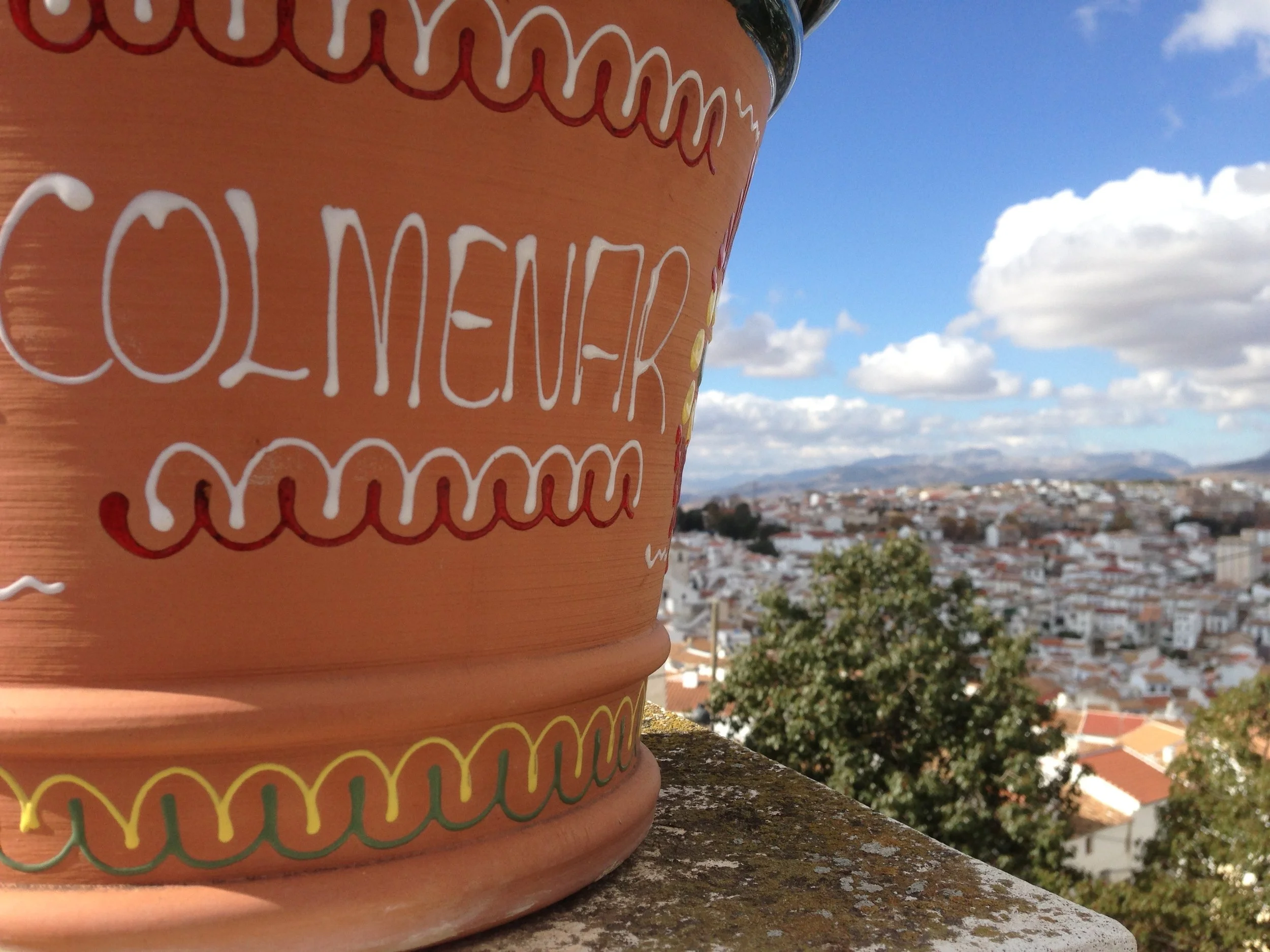Colmenar
Colmenar is a beautiful village in the northern part of the Málaga mountains (Montes de Málaga) set on the edge of both the Axarquía and the municipality of Antequera.
It is 32 kilometres from the centre of Málaga with a journey time of approximately 40 minutes. This is the perfect place to unwind and experience the real taste of true Andalucian lifestyle set in sumptuous surroundings along the “Olive Oil and Mountain Route”.
Colmenar was originally the name of an estate which produced honey (the Spanish “colmena” means beehive”). Even today you can buy honey made in the Colmenar area along with fresh locally milled flour – white and whole grain – and also lovely raw and brown sugars. Don’t miss a visit to the Museo de la Miel, Colmenar’s honey museum.
The layout of Colmenar is typical of Andalusian villages where narrow, winding streets are the norm. According to legend, the Candelaria Hermitage is a 17th century building that was erected by a group of sailors from the Canary Islands who were miraculously saved from a storm off the Málaga Coast. The hermitage was a public display of their gratitude. The Patron Saint of Colmenar is the Virgin of the Candelaria who has pride of place in the “Walk of Saints” in the grounds of Jardin al Andalus.
The area where Colmenar is located has an ancient history as it is on the route that links the Axarquía and the Guadalhorce Valley. The village is one of Andalucia’s “younger” pueblos – it wasn’t actually established until after the Christian King’s conquest and didn’t become an independent township until 1777. Outside the village, there are archeological remains in areas such as the Cueva de las Pelusas and the Cortijo de Gonzalo in the Zorrera stream area. Thanks to such sites, it’s clear that the area was inhabited as far back as Neolithic times and also during the Metal Ages.
Outside the village, there are archeological remains in areas such as the Cueva de las Pelusas and the Cortijo de Gonzalo in the Zorrera stream area.
If you’re looking to buy something typical from Colmenar there are a wide variety of artesanal products to enjoy. The olive oil, honey, natural sugars and fresh milled flour make nice gifts along with other food products – especially bakery items – made in this area. Additionally the people of Colmenar specialise in weaving products: baskets, mats and carpets from natural fibres such as esparta grasses. The most typical dishes served in Colmenar represent traditional Andalusian mountain fare: tasty garbanzo stew, thick, chilled “porra” soup, “migas” (fried bread crumbs) and several famous oven-roasted meats. The town is also known for its cured meats and for cooking with local olive oil and home-made “mosto” (grape juice). Jardin al Andalus provides olives to the local olive oil consortium and we roast our own almonds.
One of the most popular fiestas in Colmenar is “Día de la Pipa”. To celebrate, everyone heads to the countryside for a picnic featuring local homemade specialities. The annual fair takes place during the second week of August. On February 2 every year, the patron saint, the Virgin of the Candelaria, is honoured with a procession through the streets of Colmenar and out to the hermitage. Holy Week is also observed with processions in Colmenar with the “Virgen de los Dolores” the focal point. At Christmas the village is decked out with nativity scenes and villagers are especially fond of singing traditional Andalusian Christmas carols.
Each spring there is a unique Art event; artists are provided with a date-stamped canvas and have 24 hours to paint an image of Colmenar. The event is in its tenth year and some of the best images are on display at the Town Hall. They range from abstract to realistic and are a fascinating interpretation of this beautiful Andalusian village.
The road from Malaga, known as the Carretera de Colmenar, takes you through pine forests and spectacular countryside to the mountain towns of the Malaga province. On the way into Colmenar look out for the Puerta de La Cruz, a stone steeple showing the coat-of-arms of the village – a beehive with seven bees flying over it. In 1488 this was handed over by Hamet el Zuque to Francisco de Coalla.
